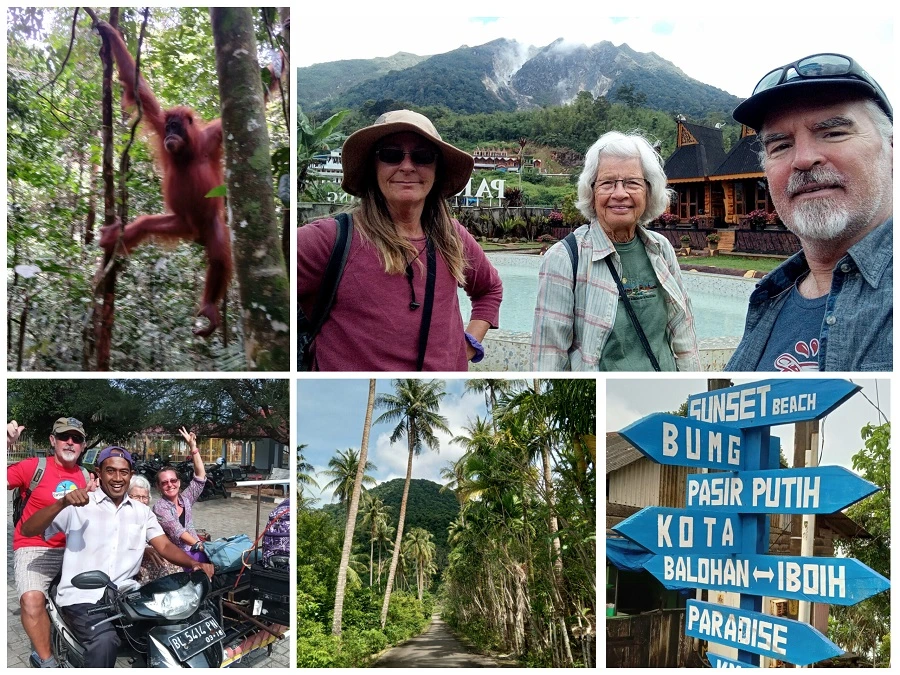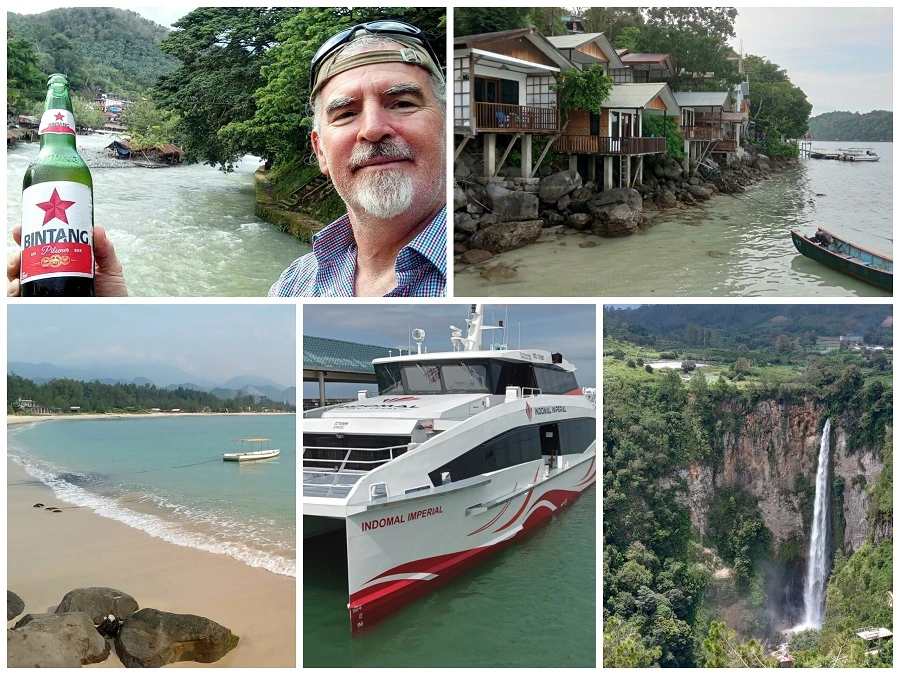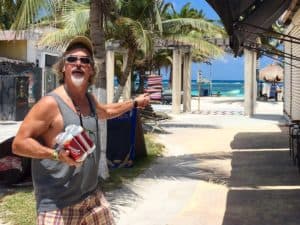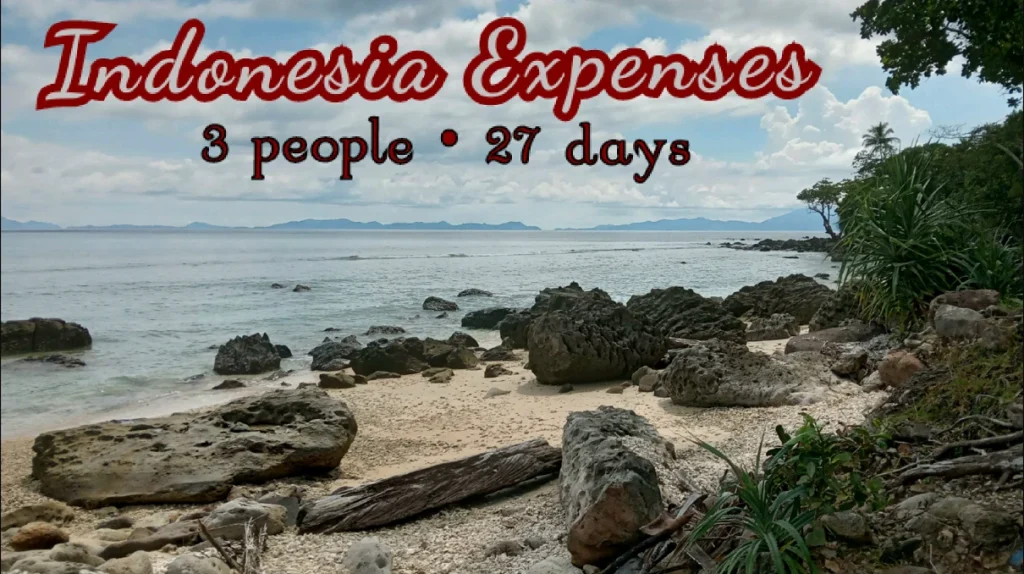Sumatra, Indonesia.
Just the sound of it conjures untamed jungles and nature, wild beasts and waterfalls, raging rivers and smoldering volcanoes: a true Discovery Channel production.
We ‘Earth Vagabonds’ recently wrapped up nearly a month of knocking around North Sumatra. And while the place is indeed a natural paradise, we also found a nice balance of comforts and conveniences at prices that most any traveler would enjoy.
We’ve detailed some of the individual highlights of our 27-day trip in a few other blog posts about orangutans, volcanoes and vistas. This is a cost accounting of the whole trip.

Below are the exact expenditures we incurred between February 24 and March 22 as we toured the northern tip of one of the largest – and wildest – islands on earth.
Note: all figures reflect the cost of three persons. My mom Diane spent the whole time with my wife Ellen and I; part of mom’s annual winter getaway from Cleveland, Ohio, USA.
$907 — Housing
$803 — Travel
$476 — Excursions
$383 — Restaurants
$180 — Tips/Gifts/Charity
$106 — Beer
$36 — Supplies
$32 — Local transit
________________________
$2,923 total : 27 days, 3 persons
The tally above differs from our usual slow-travel, month-long rental style. In North Sumatra, we squeezed six different locations into our short-month schedule. We played tourist.
When my wife and I are slow traveling alone, we often get big discounts on Airbnb stays of a month or more. Lodging in Sumatra is quite cheap by-the-night, but with mom along we usually booked two separate rooms – so the housing cost is about double. (Mom does kick in money.)
The other big cost category: travel – includes ferry boat tickets to Sumatra from Malaysia ($48 pp); airline fares for the return ($38 pp); 30-day Indonesian visas ($47 pp); various buses, taxis, motorcycle tricycles, etc. Of course, the third person added 50 percent to many travel expenses.
But “private car” transports between locations were a better value with mom; same price for two OR three. We spent almost $300 for direct, comfortable, rides tailored to our schedule. Indonesia is not known for public transit systems. The car hires saved countless hours of planning, waiting, language and weather issues.
With three adventurers in the mix, the excursions category spending also jumped greatly from our normal monthly total. Touring, trekking, animal tracking, camping, diving… hey, Sumatra has ‘stuff to do’!
Finally, Bintang beer. Mmmm… one of my faves. Has some taste — a little ‘bite’. Kinda like North Sumatra. Mom had a couple. But mostly they were all mine!

To sum up, our Sumatra month was an unforgettable experience. Amazing places, people, and prices in a part of the world still largely unspoiled by pollution and plastic and consumerism and big business. Sadly, palm oil plantations, new toll roads, and other economic “progress” are pressuring the place and its precious species.
We plan to return in the near future — before more changes. Staying longer and slower could be really enjoyable – and an even better value! Kuala Lumpur, Singapore, Jakarta are all easy gateways. If you’re hanging out in Asia, Sumatra is a hidden gem not to be missed, in our opinion. As we keep saying: travel now ’cause life is NOW!
Be thankful and generous. Happy trails & more beer.
Thanks for reading, “Indonesia expenses: Sumatra spending summary.”
About Theo

Tedly (Theo) retired early from the news business to wander the planet with wife Ellen. He enjoys exploring all Earth has to offer: jungles and beaches, volcanoes and deserts – always drinking beer along the way.
Climate catastrophe note
Budget slow travel means we don’t own a car and we fly as little as possible, so we emit less carbon than casual tourists.
Sadly, we see the negative impacts of the climate crisis all over the world.
For a scientific look at the current crisis and fast-approaching catastrophe, we highly recommend The Climate Book. Civilization is running out of time to evolve.
And the climate emergency countdown clock we’ve had on our site for years seems to have run out of time now that we passed the 1.5°C threshold in 2024.

